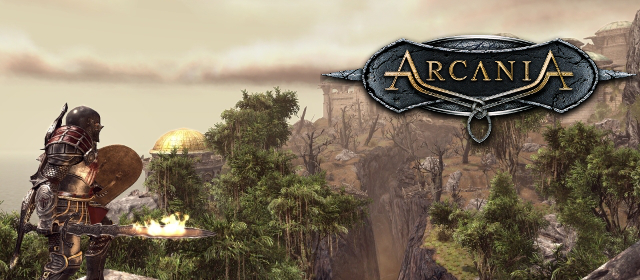You have to wonder sometimes how fantasy civilisations ever stand a chance of prospering. It seems you can’t turn your back for five minutes without an ancient terror coming back from the grave, a gateway to Hell opening up somewhere, a tyrannical ruler rising to power or, at the very least, some kind of savage race with bad teeth and worse hair pillaging innocent fishing villages.
It almost seems like some kind of defence mechanism that one of those fishing villages will usually contain at least one young person with an extraordinary heritage or untapped potential – and they’re never the one to take the first arrow, or the one who steps out of the straw tent just in time to catch a morningstar in the mouth. They’re always busy somewhere doing something they can feel guilty about later when they return to the village (or come to, in some cases) to find everyone dead. Then of course, regardless of their lack of training or direction, they immediately vow revenge, kill ten rats or wolves and find a magical sword.
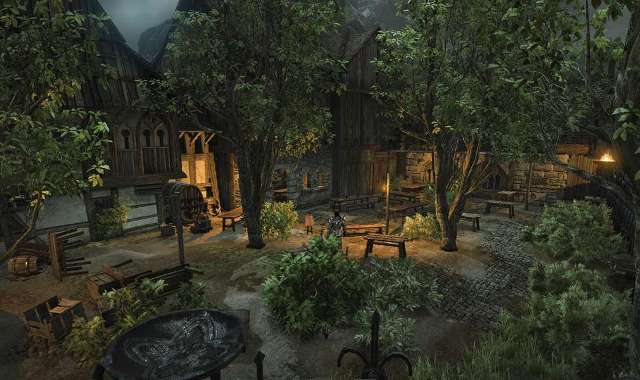
It’s a horribly overused, hackneyed convention that has existed as long as fantasy has and will continue to thrive for as long as there are games like Arcania to perpetuate it. In this particular title, the nameless protagonist is just about to propose to his girlfriend (winning her hand forms the basis of the tutorial) when the unthinkable happens, and while he’s off having a witch awaken his dormant magical powers, the King’s Paladins descend on his quaint little hunting village (where they also fish, I expect) and kill everyone, leaving him no choice but to set off to the mainland with his friend and mentor, Diego, to exact his revenge.
The culprit is King Rhobar III himself, possessed by an ancient demon who is using his royal influence to dominate the kingdom and the world, and only the nameless one can stop him. It’s not unfair to say that, even if you’ve never played a Gothic game before, you’ve probably played through this plotline at least half a dozen times.
The Complete Tale comes with the original Arcania: Gothic IV and standalone expansion The Fall of Setarrif, which sees [Insert Name Here] travel to the land of Setarrif where the evil that once clouded King Rhobar’s mind now possesses another ruler. It’s basically more of the same as you travel the land looking to re-recruit your former allies, but you’ll be doing it at a higher level. You can either import your character from the main game or create a new one who’ll begin at Level 28, with 20 skill points available and a full set of equipment in-line with whichever “class” you select.
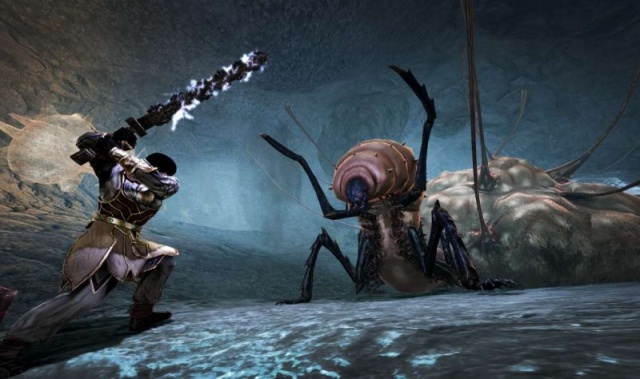
The main game itself imposes no real class restrictions and allows you to build your John Doe however you choose. The comparatively shallow skill tree contains the usual sliders for melee damage, increased health and a steadier bow-arm, and each can be filled up by assigning skill points earned when you gain a level. As is standard, killing monsters and completing quests (of which there are scores and scores) earns you the XP in the first place. So far, so generic, right? And unfortunately, Arcania never steps outside of its comfort zone. Not even once. Not even a toe. Done right, that sort of thing can work wonderfully for a fantasy RPG, but sadly Arcania’s comfort zone is wallpapered entirely in beige.
The combat takes place in real time, and utilises the usual mix of hacking, slashing, blocking, and rolling, but it’s so ponderous and lacking in impact that you never really feel you’re doing any damage to anything, and even a boss fight becomes instantly boring. Get knocked down (and you will, a lot) and Joe Bloggs takes an age to get back on his feet, during which time the apparently confused enemy AI stands still and lets him get his breath back. Archery is assigned to R2, while magic is mapped to R1, but both feel loose and spongy. Your arrows lack any sense of power, and the spells – particularly at lower levels – fizz and pop like damp fireworks. There’s just no feeling of power or control, and it makes combat a genuine slog for most of the early part of the game. Even later, when you’ve grown stronger, it’s barely above adequate.
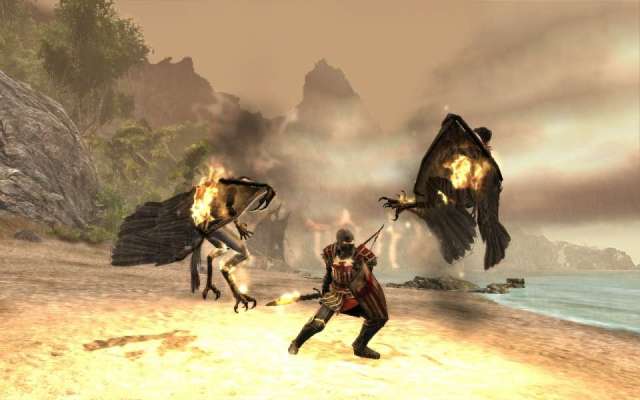
Your mix of spells is fairly limited, too, as you’ll only be wielding magic of the fire, ice, and lightning persuasions, bolstered by limited-use scrolls and runes. It is possible to develop a hardy warrior, ranger or mage, but the easiest and simplest route is the first one. Crafting features heavily in the latter half, but feels like an obligatory addition rather than a natural part of the game. Throughout every area you’ll find reagents growing in clusters (or you can harvest them from your enemies) to brew into potions or cook to create attribute-replenishing goodies. They come in handy, but you’ll rarely have to rely on them. Weirdly, you’ll find that lots of things are usable even if you aren’t crafting stuff at the time. You can interact with cooking pots, anvils, beds, and many other environmental objects, but it’s completely pointless and the protagonist has certain scripts he has to follow no matter the situation. This leads to mild silliness as he relaxes comfortably on a straw bed in full plate armour, or sits in an empty room and gestures for an invisible servant to bring him a drink. It’s most likely intended to aid immersion, but it has the opposite effect.
Given the catalogue of negatives, you’d be forgiven for avoiding Arcania even if you love fantasy RPGs, but it’s not all bad. Granted, you may need to dig hard to find the diamonds in the rough, but they are there. The world is pretty large, for one, and the universe has been around long enough to collect its fair share of lore and backstory. There’s also lots of loot on offer for those of a kleptomaniacal bent, providing armour and weapons and trinkets galore – all handily stored in your bottomless inventory. For many, killing, looting and levelling in a variety of catacombs, dungeons, tombs and forests is enough to keep them reasonably happy in a fantasy RPG, and Arcania: the Complete Tale offers plenty of that.
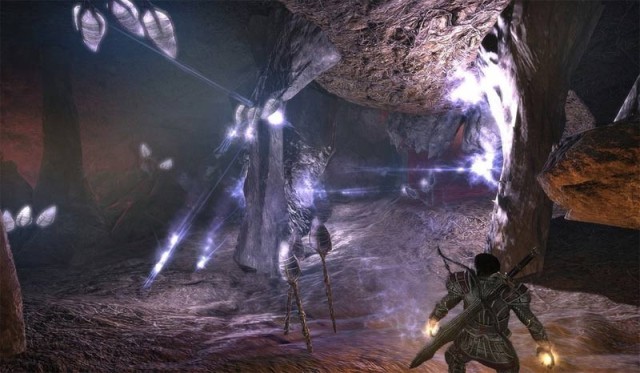
Technically-speaking, however, it’s a shocking mess. The graphics are, frankly, horrendous, with a world that doesn’t even look as good as Oblivion’s (the fourth Elder Scrolls game, released on consoles in 2005). Character animations are stunted and uncomfortable, textures are bland and lack definition, and it’s riddled with bugs and glitches and screen-tear, and suffers some of the freakiest texture pop-in I’ve ever seen, leaving characters with featureless faces and glowing white eyes for entire conversations. The voice acting is also terrible, featuring some of the worst fake regional accents since Risen. That said, dodgy voice-work is usually good for a snigger here and there, so it may at least raise a smile.
VERDICT: Little more than a series of colourless fetch and kill quests, Arcania represents the worst sub-group of fantasy RPGs that does nothing but give you places to walk to and things to kill over and over again for an incredibly bloated runtime. The character progression and loot are adequate to provide fun to fans of the genre, while the world does boast some impressively deep lore, but all in all, even with the expansion built-in, there’s nothing here that stands out in any way that matters. Any quality is savagely hamstrung by the awful graphics engine, amateur voice-acting and yawn-inducing plot, and the mediocre combat is no boon, either. If you’re just after something to keep you occupied for a few nights and looting and levelling are your poison, then it might be worth snagging Arcania: The Complete Tale from a bargain bin at some point, but this close to the end of the current generation, there just aren’t enough redeeming features here to warrant a hearty recommendation.

POOR. Games tagged 4/10 will be playable, perhaps even enjoyable, but will be let down by a slew of negative elements that undermine their quality and value. Best avoided by any but hardcore genre fans.


